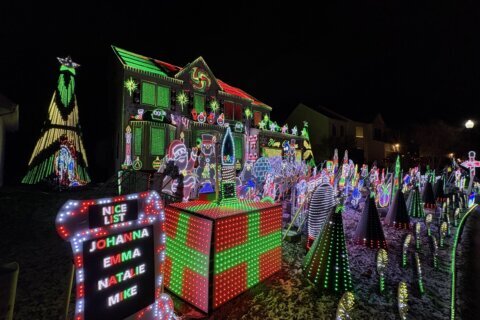WASHINGTON — An activist hopes to get approval for a flag-burning protest outside the Loudoun County Courthouse in Leesburg next month.
Gene Stilp, a lawyer who lives in both Loudoun County and Harrisburg, Pennsylvania, is applying to burn a combined flag that has a Confederate flag on one side and a Nazi flag on the other at the courthouse on June 12.
Stilp said he got the idea for the flag following last year’s deadly white nationalist rally in Charlottesville.
“Down there, you saw the Confederate flag and you saw the Nazi flag side by side,” he said. “So I thought, what a powerful symbol it would be to join these two symbols of misguided beliefs together.”
He has previously performed the demonstrations at NASCAR races and in front of courthouses in Pennsylvania. In some demonstrations broadcast on Facebook, he has also burned placards reading “TRUMP.”
“The purpose of the demonstration is to ask the question, is there racism, bigotry, hatred in Loudoun County?” he said. “And it’s not for me to answer the question. It’s up to the people to reflect and answer the question.”
He said previous demonstrations have provoked “various yelling and screaming from a distance” and that he’s been issued many threats on websites affiliated with the alt-right, including death threats.
Stilp said he chose the courthouse in Leesburg as a possible location following some confusion involving the release of information by police about the recent arrest of a prominent white nationalist in Leesburg.
Christopher Cantwell, who was arrested in the lead-up to last summer’s rally in Charlottesville, was arrested in Leesburg in March for public swearing and intoxication.
According to Officer Sam Shenouda of Leesburg police, the incident was listed in a weekly arrest report, but Cantwell was listed under the wrong last name because of a clerical error. The mistake led to questions over whether the incident was “hushed up,” in Stilp’s words. In an editorial, the Loudoun Times-Mirror said police “bungled” the handling of incident.
In his application for use of the courthouse grounds, Stilp writes, “The educational event safely uses Constitutionally protected symbolic First Amendment speech to destroy the combined flags by safely burning the combined Confederate-Nazi flag in a sturdy metal trash can,” and asks to hold the event near the statue to the west of the courthouse.
The courthouse complex does also include a statue of a Confederate soldier, but Stilp is not calling for the statue to come down. However, he suggests having the weapon taken out of the soldier’s hands and replaced with a farm tool, symbolizing the soldier’s return to his life before the Civil War.








